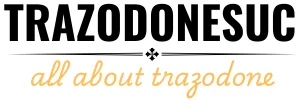SAN RAFAEL, Calif. — In a quiet corner of a San Rafael library, artist Evri Kwong works on a series of large panels depicting the Angel Island detention center where his Chinese grandparents were interrogated after arriving in America. The detailed cross-hatching accumulates into shadowy rooms and anxious figures, each line a meditation on family history and American immigration.
Kwong’s ambitious multi-panel work depicts moments from his grandparents’ immigration experience, showing them coming off the boat, passing through the processing center, and enduring interrogation in small rooms. The figures are deliberately faceless, their bulbous heads rendering them as everymen whose physical actions tell the story. “Painting is my meditation,” Kwong says. When he is making the artwork, it becomes a total meditation responding to mark-making, shape, form, and color.
The visual artist and painting instructor came to this project through conversations with a cousin interested in genealogy. Learning what his grandparents endured at Angel Island, and discovering that his Japanese uncle had been interned at Heart Mountain during World War II, hit him hard. Rather than looking away, Kwong decided it was time to investigate these painful histories through his art. “It’s not like a finger pointing or blaming, but just really trying to understand history, how my family got here, how they came here, what happened to them,” he explains.
His distinctive style developed over decades of experimentation. His use of Sharpie markers emerged from a desire to combine painting and drawing into one medium. Charcoal “just didn’t work for me. It was too messy. I wanted something a little bit more contemporary,” he says. The Sharpie allowed him to achieve the permanence and precision he sought, and these days he also uses Micron pens for finer details.
Kwong cites Caravaggio as a major inspiration for his use of light and shadow, employing chiaroscuro effects through meticulous hatching and cross-hatching to draw the viewer’s eye to specific parts of each composition. He has traveled to Rome to see Caravaggio’s work in person and considers him an all-time favorite.
Even his unusual first name carries historical weight. “Everi comes from every man, which was a boat that sailed out from the Sausalito Bay in 1962 to protest nuclear bomb testing,” he explains. His parents chose the name, though as a child Kwong longed to be called John or Steve. Now he fully embraces the name and its connection to protest and social consciousness.
“My biggest hope would be like if people, when they see this piece, that they think about their own family history, whether it’s a happy one or a sad one,” Kwong says. The work represents his effort to connect the past to where we are now and ensure these stories are handed down. He discovered that learning his family’s difficult history was actually liberating rather than purely disturbing.
For Kwong, making art is not about waiting for inspiration. “For me it’s not a question of being inspired, but just making the work. It makes me feel alive, and especially right now.” He needs to make the work to feel alive, moving between panels as he creates and letting the composition evolve organically.
He clarifies his intentions about the work’s impact. “If I was actually trying to be really provocative, I’d take a gun and start shooting. But I want to do something that’s productive, I want do something educational. So I’m using the art as that platform to be educational.”
The artist hopes his Angel Island work will eventually find a permanent home in a museum and plans to give talks throughout the Bay Area, including at the Asian Art Museum.
“This is rich American history, not ethnic studies, no nothing of that. It’s just true blue history that people should know,” he insists. He feels propelled to make as many of these works as he can while he is still here, documenting the Page Act of 1875 that banned Asian women from entering the United States and the lived experiences of families like his own who passed through Angel Island’s detention rooms.
Niko Travis is a dedicated health writer with a passion for providing clear, reliable, and research-backed information about medications and mental health. As the author behind TrazodoneSUC, Niko simplifies complex medical topics to help readers understand the benefits, uses, and potential risks of Trazodone. With a commitment to accuracy and well-being, Niko ensures that every article empowers readers to make informed decisions about their health.
